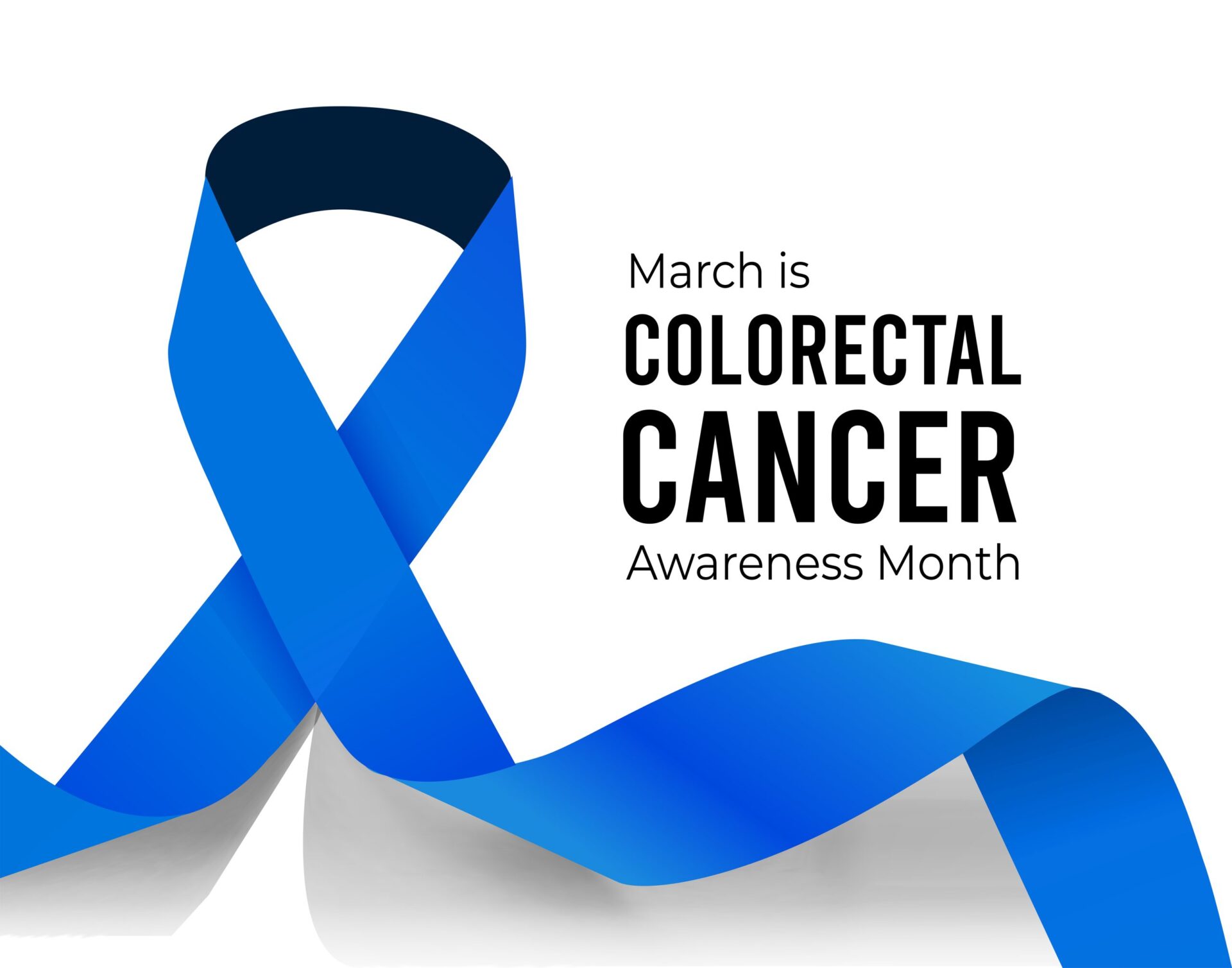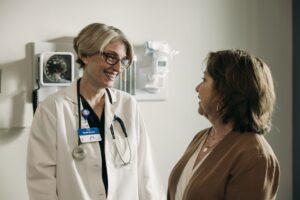Colorectal Cancer: Risks and Awareness
Content provided by Alora Terry, MS, CGC, at TCSC
 March is colorectal cancer awareness month. With 1 in 23 to 25 Americans (approximately 4%) developing colorectal cancer at some point in their life, an understanding of prevention and detection can be life-saving information.
March is colorectal cancer awareness month. With 1 in 23 to 25 Americans (approximately 4%) developing colorectal cancer at some point in their life, an understanding of prevention and detection can be life-saving information.
Cancer Screenings
Colorectal cancer (CRC) prevention and detection often take the form of screening procedures. Screening is key because in some cases it allows for the removal of precancerous polyps (abnormal growths inside the colon or rectum) before they have the opportunity to develop into cancer, or they help to find cancer early before symptoms start. When cancer is detected earlier it is often easier to treat and cure.
There are several different types of CRC screening including visual exams, such as colonoscopies, or more recent options include stool-based detection tests which can even be completed at home. However, not all screening options are the correct fit for everyone. It is important to always share all personal and family health history, so providers can help determine the best screening option on an individualized basis. To help determine what screening option is best for a person, it must first be determined if a person is considered to be at an average or increased risk of developing CRC.
Risk Levels for Colorectal Cancer
In years past, the recommended age for the general population to begin CRC screening was 50, but now many organizations have altered this recommendation to 45 due to the increase in early onset CRC. Moving up the recommended age for screening makes it important for people to learn their risk of CRC before the age of 40. This will allow them to being screening at the appropriate age.
[bs_well size=”sm”] The National Comprehensive Cancer Network (NCCN) outlines the risk levels as follows:
- Average risk:
- Individuals 45 years old with no other major risk factors
- Increased risk:
- Individuals with blood relatives who have history of CRC or advanced precancerous polyps
- Individuals with a personal history of CRC or polyps
- Individuals affected with an inflammatory bowel disease (ulcerative colitis or Crohn’s disease)
- Individuals affected with a hereditary CRC cancer syndrome (Lynch syndrome, polyposis conditions, etc.)
For people at average risk, screening should begin at the age of 45, and they may consider speaking with their providers about the different screening options to pick the best fit for them. After a patient completes a screening exam, providers will use that information to help guide when a person should be screened again. If a person finds that they fall into the increased risk category they should speak with their provider ensure they start screening at the right age. [/bs_well]
People at Increased Risk
One of the more common reasons people will find themselves in the increased risk group is due to a family history of CRC or polyps. The NCCN provides detailed guidelines for how these individuals should be screened.
[bs_well size=”sm”] NCCN Screening Recommendations Based on Family history
- Individuals with 1 or more first-degree relative (parent, full sibling, child) with a history of CRC:
- Screening should start 10 years before the youngest diagnosis in a relative or at the age of 40, whichever occurs first
- Individuals with 1 or more second-degree relative (grandparents, aunts/uncles, half siblings, nieces/nephews, grandchildren) with a history of CRC:
- If the CRC was early onset (before the age of 55) discuss starting prior to 45 with provider
- Individuals with 1 or more first-degree relative (parent, full sibling, child) with an advanced adenoma polyp or with an advanced sessile serrated polyp:
- Screening should start at the age the polyp was identified in the relative or at the age of 40, whichever occurs first [/bs_well]
Is CRC Hereditary?
While a person’s family history may indicate they should begin screening at an earlier age than typical, it could also suggest a person has a hereditary risk of developing cancer. Approximately 5-10% of CRC is hereditary, meaning that out of 100 people with CRC, 5 to 10 of those were developed due to an inherited risk.
Identifying people that carry a hereditary risk for CRC is essential, so they may be followed appropriately to best prevent or detect cancer. It may even determine other cancer risks a person had that they were unaware. How can a person learn if they have a hereditary risk?
When considering your personal or family history you want to be on the lookout for red flags for hereditary cancers such as:
- young ages of diagnosis
- multiple people in the family with the same type or related types of cancers
- more polyps than typical
- rare cancer types
If these features are present in a personal or family history a person may want to consider genetic counseling to have a full risk assessment and discuss the option of genetic testing. Click on this link to read about Genetic Counseling and Genetic Testing.
Red Flags for Hereditary CRC:
- CRC or uterine cancer prior to the age of 50
- 2 separate CRC cancers or both CRC and uterine/endometrial cancer in the same person
- 2 close relatives with CRC or uterine/endometrial cancer, one diagnosed prior to 55
- 3 close relatives with CRC or uterine cancer at any age
- 10 or more colon polyps at any age
- A relative with a known hereditary cancer syndrome
If you are interested in genetic counseling, speak with your provider who can refer you. Healthcare providers can find a referral form for the Thompson Cancer Survival Genetics Clinic at https://www.thompsoncancer.com/genetic-counseling/. Or reach out directly to the TCSC Genetics Clinic department at 865-331-2350 to get more information.
Resources for additional information:
- The American Cancer Society: https://www.cancer.org/cancer/colon-rectal-cancer.html
- The National Comprehensive Cancer Network: https://www.nccn.org/patients/guidelines/content/PDF/colorectal-screening-patient.pdf



